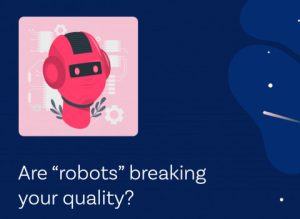Optimizing ETL Testing with 'Small-Dataset' Approach
Customer
Various organizations requiring efficient and effective testing of their ETL (Extract, Transform, Load) pipelines to ensure data quality and functional suitability.
Challenge
Testing ETL processes presents unique challenges compared to traditional web or application testing. The focus needs to be on proving functionality and ensuring data quality, but testing large datasets can be inefficient and complex. The goal was to find a streamlined approach to validate ETL pipelines effectively without the drawbacks of testing with extensive datasets.
Technology
- ETL Tools and Platforms: Various ETL tools and Data Warehouse platforms.
- Test Automation Tools: Cucumber, Robot Framework with Gherkin, Pytest, Great Expectations.
- Programming Languages: Python (with libraries such as Pytest, Pytest BDD, Pyodbc, Pandas, Requests), Java, .NET.
- CI/CD Tools: Azure DevOps.
Solution
Jasper Loos (Nekst IT) and John Kronenberg (QA Company) collaborated to refine and implement an effective ETL testing strategy, focusing on the following key elements:
- Enhanced Test Coverage: The small-dataset approach ensured high test coverage with a focus on functionality, while separate big-dataset testing verified data quality.
- Faster Turnaround Time: Automated tests ran significantly faster than manual tests, reducing the testing time from days to less than half an hour.
- Immediate Feedback: Developers received immediate feedback on code changes, facilitating quicker iterations and improvements.
- Reusable Framework: The generic design of the test automation framework made it reusable for other projects and suppliers, enhancing long-term effieiency.
- Living Documentation: The BDD approach provided living documentation of business requirements, improving transparency and collaboration among team members.
Benefits
- Higher Test Coverage: Comprehensive testing of both functionality and data quality.
- Shorter Turnaround Time: Significant reduction in testing time, allowing faster deployment of changes.
- Immediate Feedback: Quick identification and resolution of issues, improving overall software quality.
- Developer Involvement: Developers contributed to the test automation process, enhancing the robustness of the tests.
- Reusability: The framework’s design ensured it could be reused for other projects, providing long-term benefits.
Disadvantages
- Specific Skillset Required: The approach required expertise in testing, development, databases, and CI/CD.
- Time Investment: Initial setup and development of the test automation framework required a considerable time investment from the organization.
Takeaways
Key learning experiences from the ETL testing projects include:
- Small-Dataset Testing: Focus on functionality using small datasets to reduce complexity and improve efficiency.
- Complementary Test Types: Combine small-dataset testing (functionality) and big-dataset testing (data quality) for comprehensive coverage.
- Test Automation: Implement test automation using BDD to involve developers and ensure robust and repeatable tests.
- Programming Language: Use a programming language that aligns with the project (e.g., Python, Java, .NET) to facilitate developer involvement.
- Small-Dataset Testing: Instead of relying on large datasets, the approach involved using minimal but production-like datasets to validate the ETL pipeline’s functionality. This made it easier to identify and debug issues at specific points in the pipeline.
- Behavior Driven Development (BDD): Tests were structured using BDD, ensuring clarity and alignment with business requirements. Transformation rules were defined and tested through collaborative Three Amigo Sessions.
- Test Automation Framework: The test automation framework was built using Python and integrated into Azure DevOps. The framework allowed for automated regression testing, enabling rapid and repeated execution of test cases with minimal manual effort.
- Separate Data Quality Validation: While small datasets were used for functional testing, larger datasets were employed separately to validate data quality using tools like Great Expectations.
- Isolated Test Environment: Tests were executed in an isolated environment to ensure reproducibility and easier debugging.





